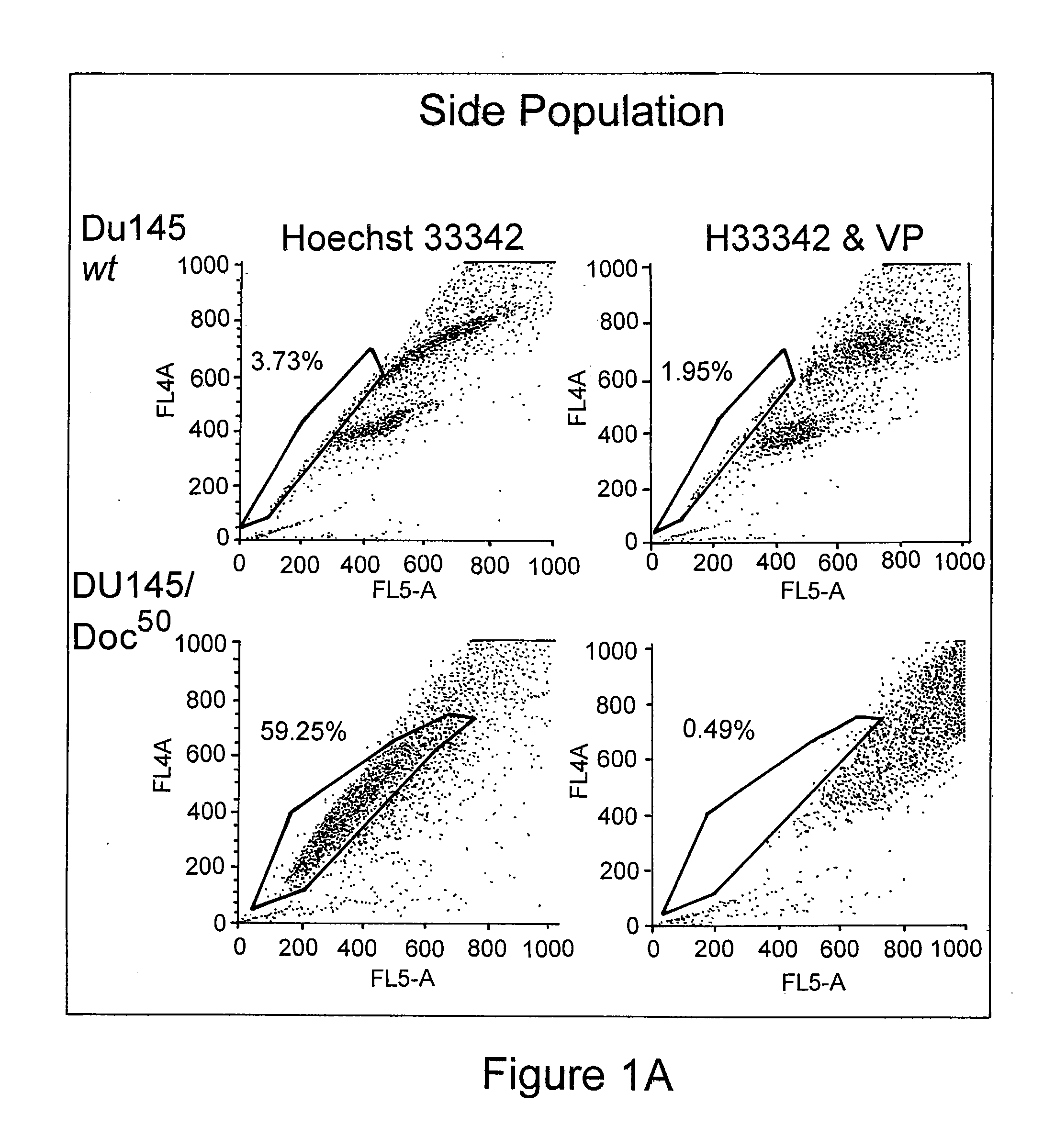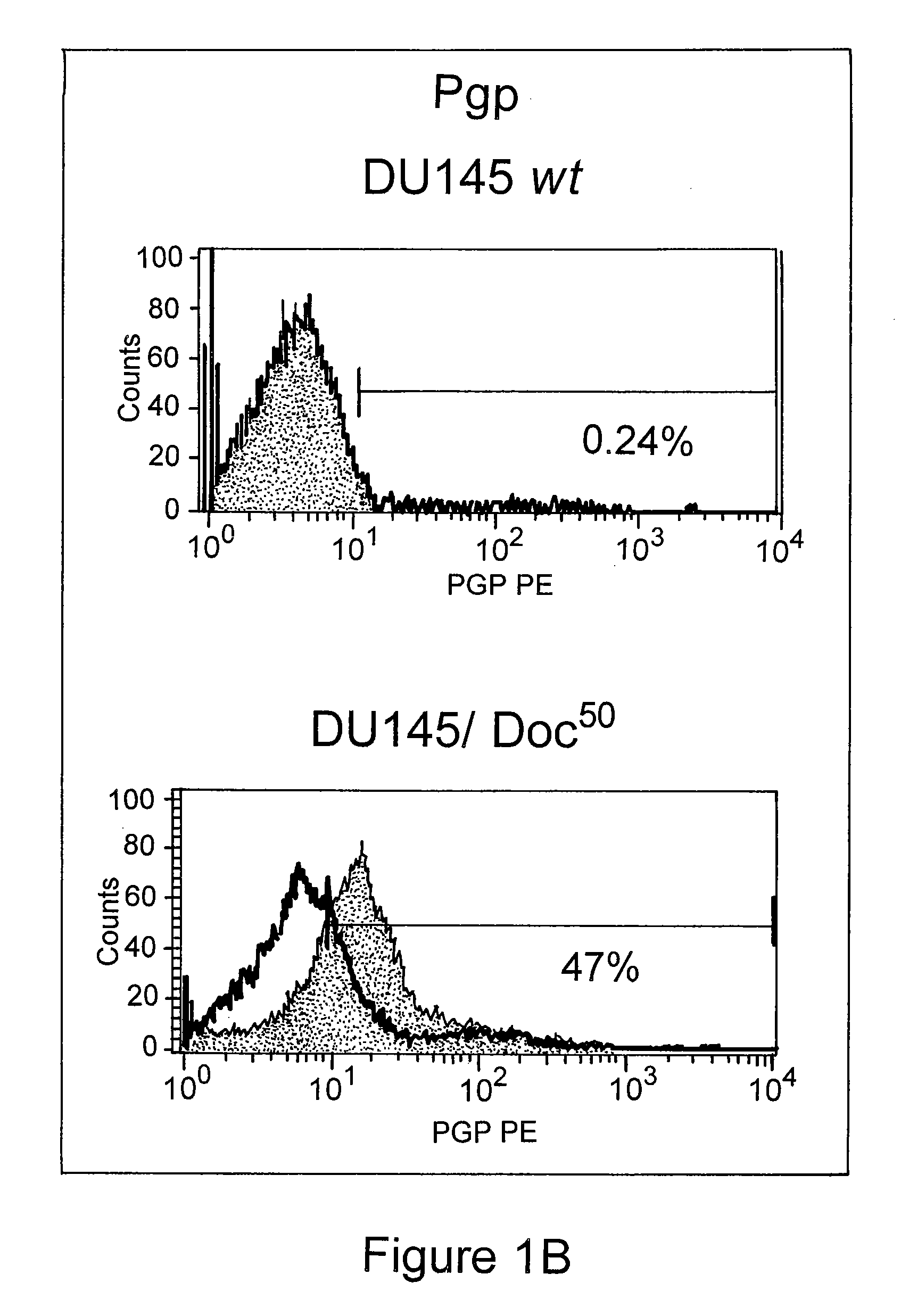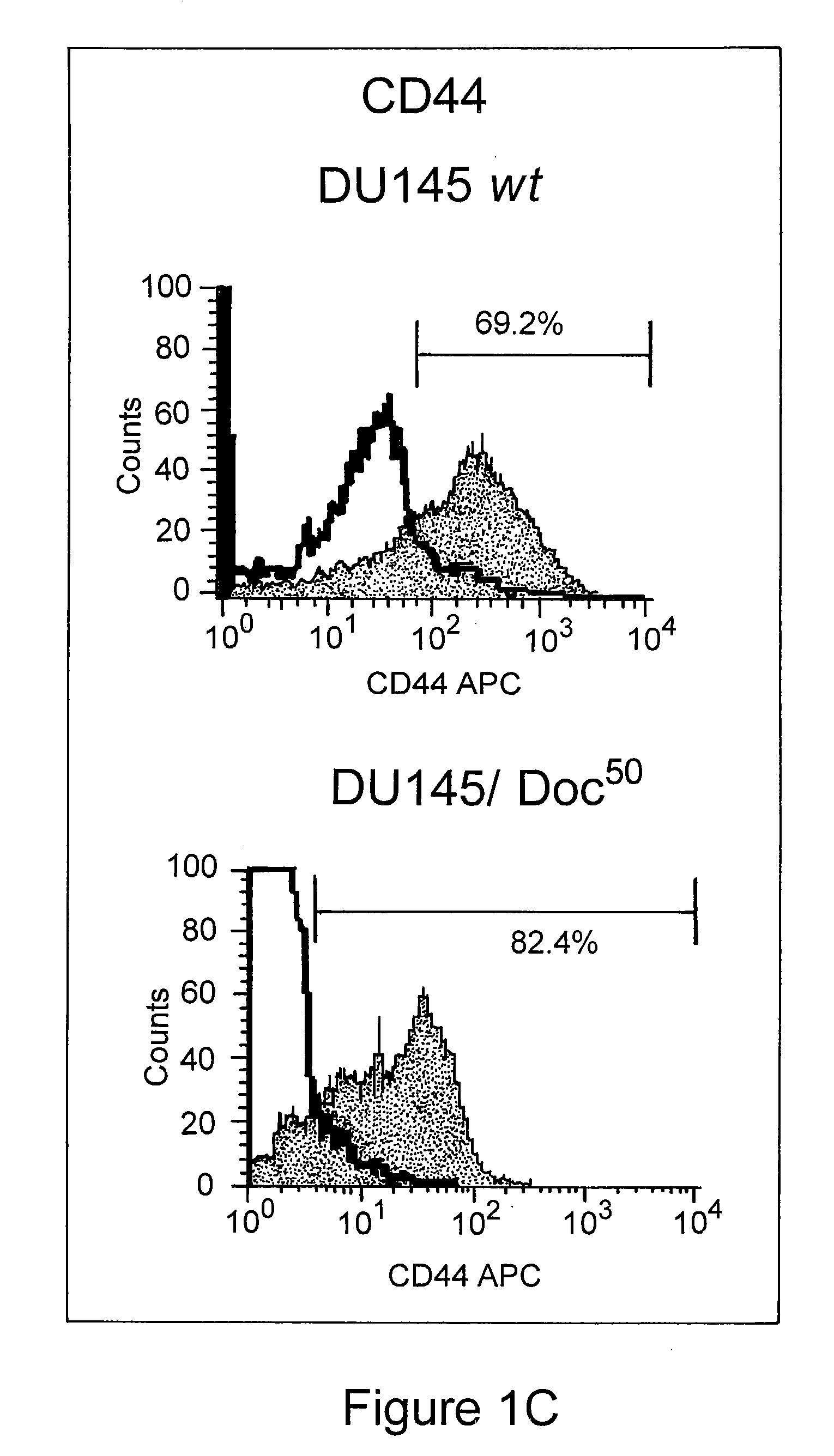Cancer stem cell-targeted and drug resistant cancer therapy
a cancer stem cell and drug-resistant technology, applied in the direction of drug compositions, biocide, heavy metal active ingredients, etc., can solve the problem of not eliminating cancer stem cells reduce or eliminate cancer cell population, prevent formation, reformation or growth of tumors and/or metastases, and reduce or eliminate cancer stem cell population
- Summary
- Abstract
- Description
- Claims
- Application Information
AI Technical Summary
Benefits of technology
Problems solved by technology
Method used
Image
Examples
example 1
Identification of the Cancer Stem Cells in Cancer Cell Lines
[0090]In this study, cancer stem cells (also referred to as the side population (SP)) and the ATP Binding Cassette (ABC) transporter defining the SP were identified in the following prostate cancer cell lines: DU145 wt (parental), DU145 / Pac200 (paclitaxel resistant), and DU145 / Doc50 (docetaxel resistant).
[0091]All examined prostate cancer cell lines: DU145 wt, DU145 / Pac200, DU145 / Doc50 exhibit a side population (FIGS. 1, 3, 5). Importantly, it was found that DU145 / Pac200 and DU145 / Doc50 cells have a very large side population (FIGS. 1, 5) of about 40 to 60% of their whole cell population consistent with our hypothesis that drug resistant cells can arise from cancer stem cells.
example 2
Sensitivity of Drug Resistant Cancer Stem Cells and Mature Cancer Cells to Sodium Meta Arsenite
[0092]Taxane resistant cell lines DU145 / Pac200 (highly pacitaxel resistant) and DU145 / Doc50 (highly docetaxel resistant) together with the parental cell line DU145 as well as the androgen resistant cancer cell lines (LNCaP / C81 and LAPC-4 / CSS100) and their corresponding hormone responsive parental cell lines (LNCaP and LAPC-4) were tested for their response to sodium meta arsenite. Growth curves from standard MTT assays showed that those cell lines respond with similar sensitivity to sodium meta arsenite regardless of their drug resistance (Table1).
[0093]Each of the prostate cell lines was analyzed for the existence of a cancer stem-like cell fraction using DCV side population analysis. Side populations (SP) based on Dye Cycle Violet (DCV) dye efflux were identified in the drug resistant cell lines, confirming previous results using Hoechst 33342 dye for DU145 / Doc50 (not shown). The occurre...
example 3
Determination of Telomerase Activity and Telomere Length in Drug Resistant Cancer Stem Cells
[0094]In this study, it was determined that the highly paclitaxel and docetaxel resistant DU145 / Pac200 and DU145 / Doc50 lines have similar telomerase activity and telomere length compared to their parental, drug sensitive DU145 cells (Tab. 1).
TABLE 1IC50 Values for Taxanes and Telomere Length in Human Prostate Cancer Cell LinesPaclitaxelDocetaxelTAMean TRFNoCell LinesIC50 (μM)Resistance (fold)IC50 (μM)Resistance (fold)Ratio(kb)1DU145 wt 0.0025 1 0.0005 112.52DU145 / Pac10N / AN / AN / AN / A0.793.03DU145 / Pac2000.351400.24000.962.84Du145 Doc10N / AN / AN / AN / A1.12.25Du145 Doc501 4001 2000 0.732.8TA = Telomerase activityTRF = Telomere Restriction Fragment
PUM
| Property | Measurement | Unit |
|---|---|---|
| Time | aaaaa | aaaaa |
| Frequency | aaaaa | aaaaa |
| Molar density | aaaaa | aaaaa |
Abstract
Description
Claims
Application Information
 Login to View More
Login to View More - R&D
- Intellectual Property
- Life Sciences
- Materials
- Tech Scout
- Unparalleled Data Quality
- Higher Quality Content
- 60% Fewer Hallucinations
Browse by: Latest US Patents, China's latest patents, Technical Efficacy Thesaurus, Application Domain, Technology Topic, Popular Technical Reports.
© 2025 PatSnap. All rights reserved.Legal|Privacy policy|Modern Slavery Act Transparency Statement|Sitemap|About US| Contact US: help@patsnap.com



